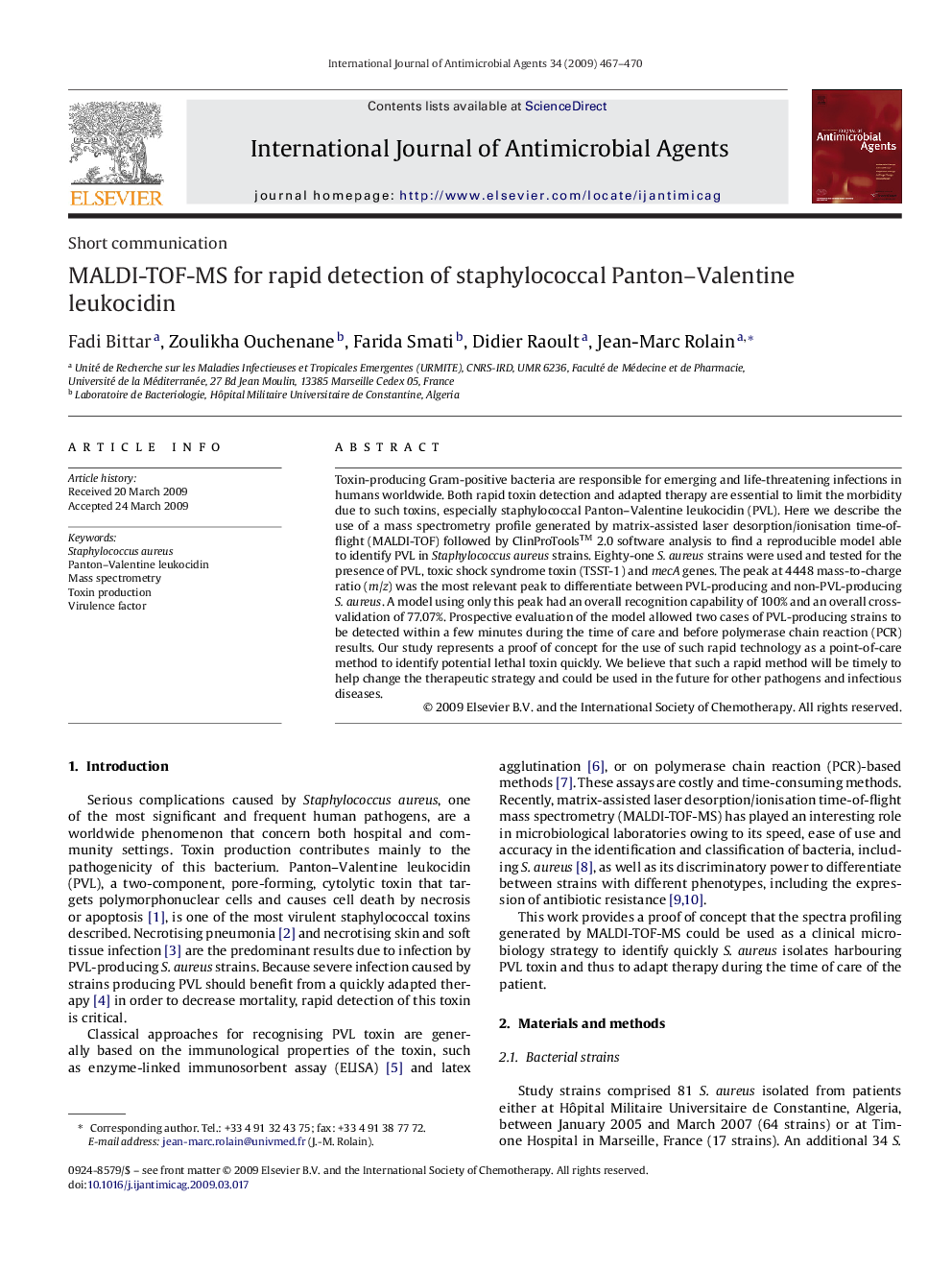| Article ID | Journal | Published Year | Pages | File Type |
|---|---|---|---|---|
| 3359715 | International Journal of Antimicrobial Agents | 2009 | 4 Pages |
Toxin-producing Gram-positive bacteria are responsible for emerging and life-threatening infections in humans worldwide. Both rapid toxin detection and adapted therapy are essential to limit the morbidity due to such toxins, especially staphylococcal Panton–Valentine leukocidin (PVL). Here we describe the use of a mass spectrometry profile generated by matrix-assisted laser desorption/ionisation time-of-flight (MALDI-TOF) followed by ClinProTools™ 2.0 software analysis to find a reproducible model able to identify PVL in Staphylococcus aureus strains. Eighty-one S. aureus strains were used and tested for the presence of PVL, toxic shock syndrome toxin (TSST-1) and mecA genes. The peak at 4448 mass-to-charge ratio (m/z) was the most relevant peak to differentiate between PVL-producing and non-PVL-producing S. aureus. A model using only this peak had an overall recognition capability of 100% and an overall cross-validation of 77.07%. Prospective evaluation of the model allowed two cases of PVL-producing strains to be detected within a few minutes during the time of care and before polymerase chain reaction (PCR) results. Our study represents a proof of concept for the use of such rapid technology as a point-of-care method to identify potential lethal toxin quickly. We believe that such a rapid method will be timely to help change the therapeutic strategy and could be used in the future for other pathogens and infectious diseases.
